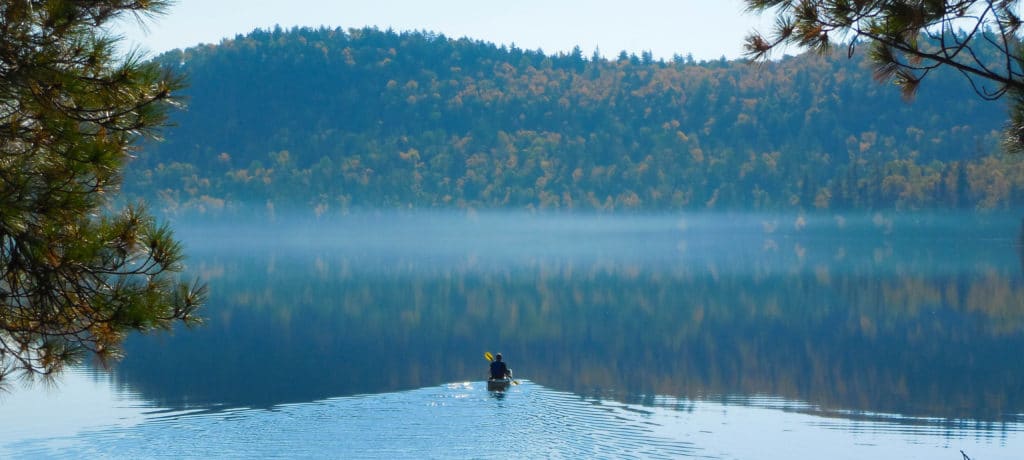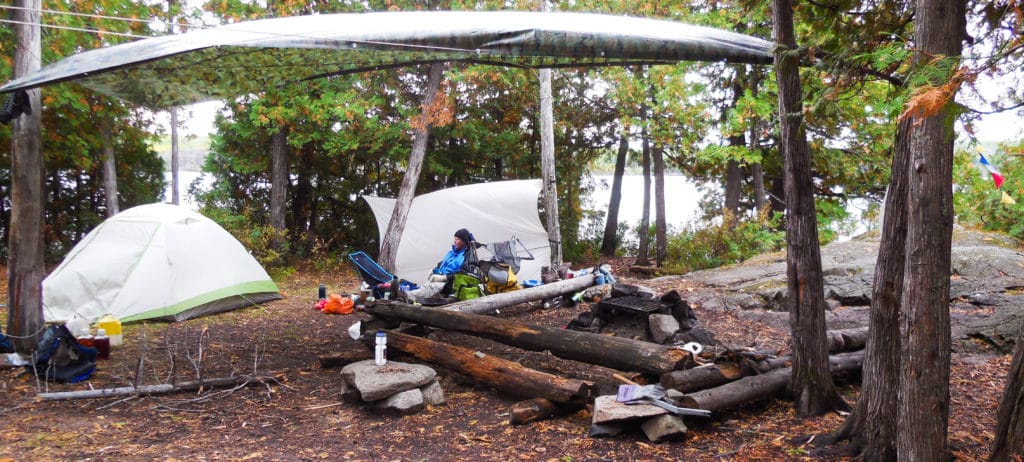The Best Time of Year for a Paddling Trip
Whether you’re looking for a weekend family get away or some solo time in the Boundary Waters Canoe Area (BWCA), autumn (September and October particularly) is the best time of year to get out for a canoe trip. Why?
Fewer Insects
Mosquitos and/or biting flies can turn an otherwise perfect trip into a frustrating one. However, if you wait until the autumn months to take your canoe trip, you’ll have much better chances of escaping some of the peskiest insects here in northeastern Minnesota. Plus, you won’t have to worry about your travel companions leaving the tent door unzipped. Of course, conditions are always changing from year to year, so we still recommend packing some insect repelling spray or clothing just in case.
Fall Foliage
If you want to catch some of the best colors in northern Minnesota, you’ll want to plan your trip between mid-September to mid-October. Along the North Shore you’ll see maples leaves begin turning to fiery red and orange in early to mid-September while the aspens and birch leaves will become bright yellow toward the end of the month and well into October.
Less Underbrush
As the cooler temperatures take over, forest underbrush will start dying down enabling people to see and travel through the forest more easily.
Cooler Temperatures
By the end of August, temperatures start dropping at night but they are typically still warmer during the day. So, unlike warm summer months, you won’t find yourself tossing and turning in the middle of the night in a hot tent. With that said, you’ll want to make sure you pack a warm sleeping bag and the proper layers to keep you warm.
Easier to Find a Campsite
As the peak canoe season winds down and children are back in school, less people are in the BWCA and on other nearby lakes. Therefore, there’s a better chance of having a great selection of prime campsites available for use.
Food
There’s something about comfort foods, that typically disappear from menus in the summer, that taste especially delicious in the fall when the temperatures lower. Not to mention, cooler temps mean you won’t have to worry about the chocolate for your s’mores melting while you’re paddling between lakes.
Things to be Aware of
Though there are many advantages to taking a canoe trip in the fall because of the change in temperatures, it is important to remember that you’ll also need to be cautious about a few things.
Water Temperatures
During autumn months the lake and river water temperatures drop. This means that an unexpected dip in the water can become dangerous quickly. Prepare by making sure that you always have extra clothing, matches and other important safety items in a dry bag. Wear warm base layers whenever the water temperature is below 60 degrees Fahrenheit. We also strongly recommend keeping a small emergency kit with waterproof matches, a windproof lighter and a small space blanket in a life jacket pocket in case you capsize and need to swim to shore. In certain situations, the ability to make a fire quickly to warm up and dry out wet clothing could save your life. This will help you avoid experiencing cold shock and allow your body to function after exiting the water. Following these and other safety guidelines is especially important in northern Minnesota since most canoe trips take place in remote areas.
Wind Hazards
Weather can change quickly with little or no warning. Be prepared for these shifts by wearing and/or packing appropriate gear when increased winds make padding more hazardous. It is always better to wait for wind and rough seas to subside before venturing out during cold water conditions.
Fire
With cooler temperatures, you’ll want to make sure you have the ability to make a sustainable fire. Learn how to rig up a tarp to protect your fire and fuel source during wet conditions. Know how to start a fire in these conditions so you are prepared (especially if there is an emergency). A folding saw and small hatchet or axe are also important pieces of gear that will allow you to gather and spit wood for burning to stay warm and dry during your trip.
Plan your Trip
With that said, if you prepare well, you can make the chances for an unpleasant or dangerous experience minimal. Be sure to check out our trip planning page for wilderness travel tips and an extensive packing list that includes important items like high quality raingear, lightweight down jackets, merino wool base layer, waterproof/insulated gloves, and a tarp setup for rain and wind block. These things will significantly increase your chances for a wonderful trip experience.




